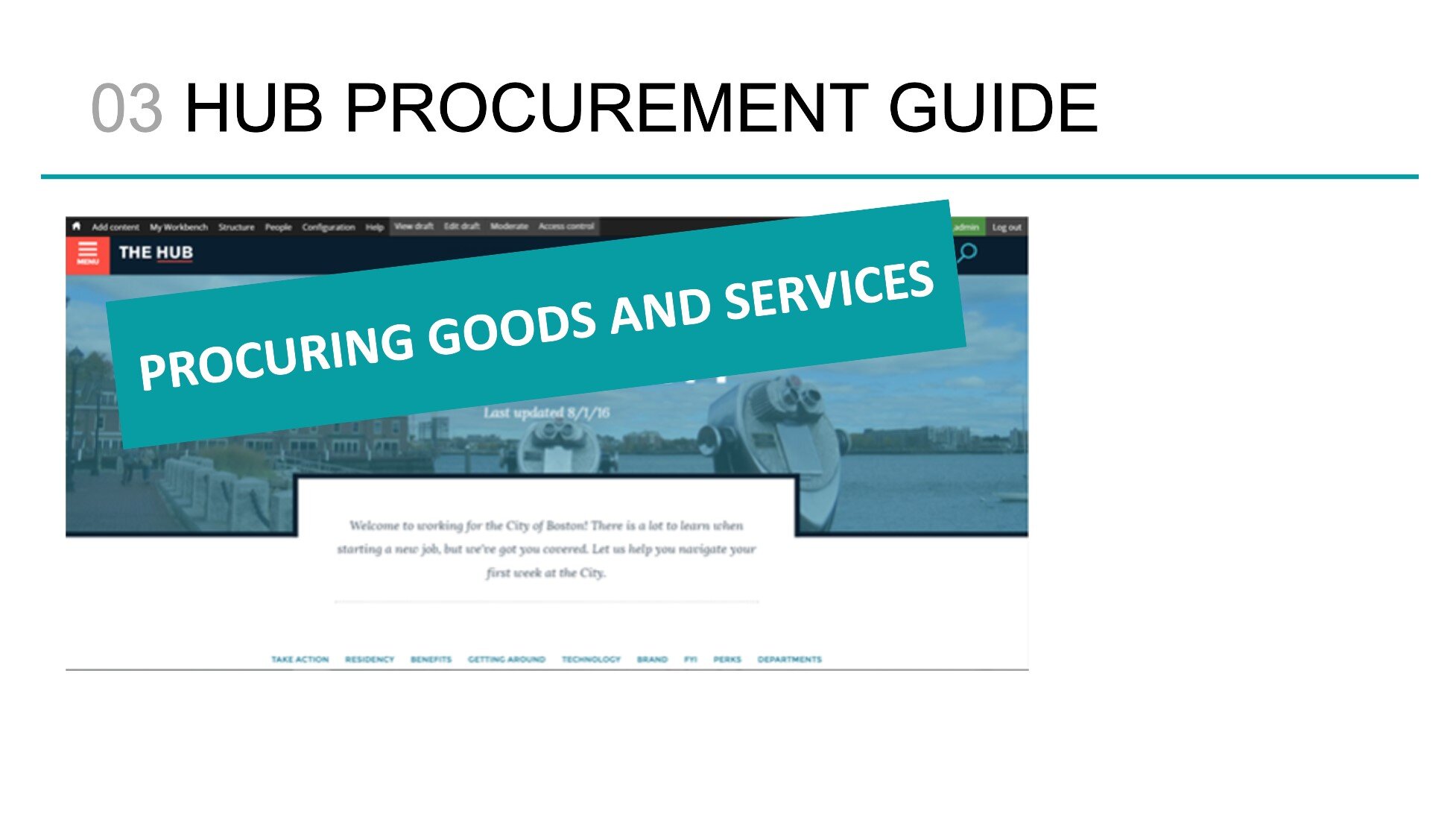Boston Technology Procurement
Designer, 2017
The Challenge
Put simply: governments can be bad at buying things, which sometimes makes them bad at serving people. As Laura Melle, the sponsor of this project, wrote: “procurement is incredibly important, but is often viewed as a boring, administrative, and frustrating function rather than an exciting, strategic opportunity to achieve great outcomes.” Melle was lead for procurement within the City of Boston’s Department of Information Technology (DoIT). Under her guidance, my goal was to make it easier not only for city staff to issue RFPs but also for vendors to respond to them.
Activities & Outcomes
As a fellow with the Boston Mayor's Office of New Urban Mechanics, I began with a simple research question:
How might we streamline and enhance the user experience of procuring services—for city staff and vendors—in order to achieve better outcomes?
I spent 8 weeks evaluating and introducing new features for the Request for Proposal (RFP) writing tool Govlist (currently called ProcureNow) and eventually creating a web-based guide to procuring services in the City. As part of this work, I conducted 17 interviews, reviewed internal and external literature including procurement statutes for the city and state, and mapped the procurement process related to RFP's for services over $35,000. I also developed user stories in collaboration with the engineers at Govlist, shipped new features, and made policy recommendations in the form of a formal policy memo to the Mayor.
The process/journey map I created for procurement in Boston became notorious and I still receive requests to discuss this research. During my fellowship, I became known for carrying the draft diagram (several 11x17 sheets of paper taped together with small sticky notes attached) with me all over City Hall. When I digitized the final diagram in Adobe Illustrator, I made sure to craft it over several 11x17 sheets so that my sponsor could easily print at DoIT without turning to a large-format printer. I believe it’s critical to craft deliverables that can be used and re-produced by clients without specialized knowledge or equipment.
In August, when I presented my findings and recommendations to Mayor Marty Walsh and his cabinet, I rolled out the 11 in. x 6 ft. process map on the conference table to demonstrate how complicated the process had become. I distinctly remember hearing one of the cabinet members say, “I thought it would be longer.”
This deck contains my recommendations and findings.
After my fellowship ended, I returned to the city to support Melle and the City Administrator in adopting some of my recommendations, including formalizing an RFP-template for technology procurement in Boston.
Artifacts
I led my presentation with this slide showing how we aimed to shift the procurement paradigm from confusing, complex, etc. to clear, simple, and ultimately, more human.
I ran this engagement over 8 weeks, including interviews and testing, developing user stories, and creating an internal guide for the city’s intranet.
Creating a journey map of the city’s process started with a high level understanding of the phases and eventually led to a very detailed process flow for RFP’s over $35K. This flow incorporated both the internal journey of city staff and the vendor journey.
I wrote and prioritized user stories for an updated workflow in the Govlist pilot, working closely with the Govlist engineers to ship new features on a biweekly basis.
During my fellowship, the city was preparing to launch a new intranet and knowledge management platform called the Hub. I wrote the Hub Procurement Guide to offer instructions to internal staff in the style and format of the new Hub designs.




